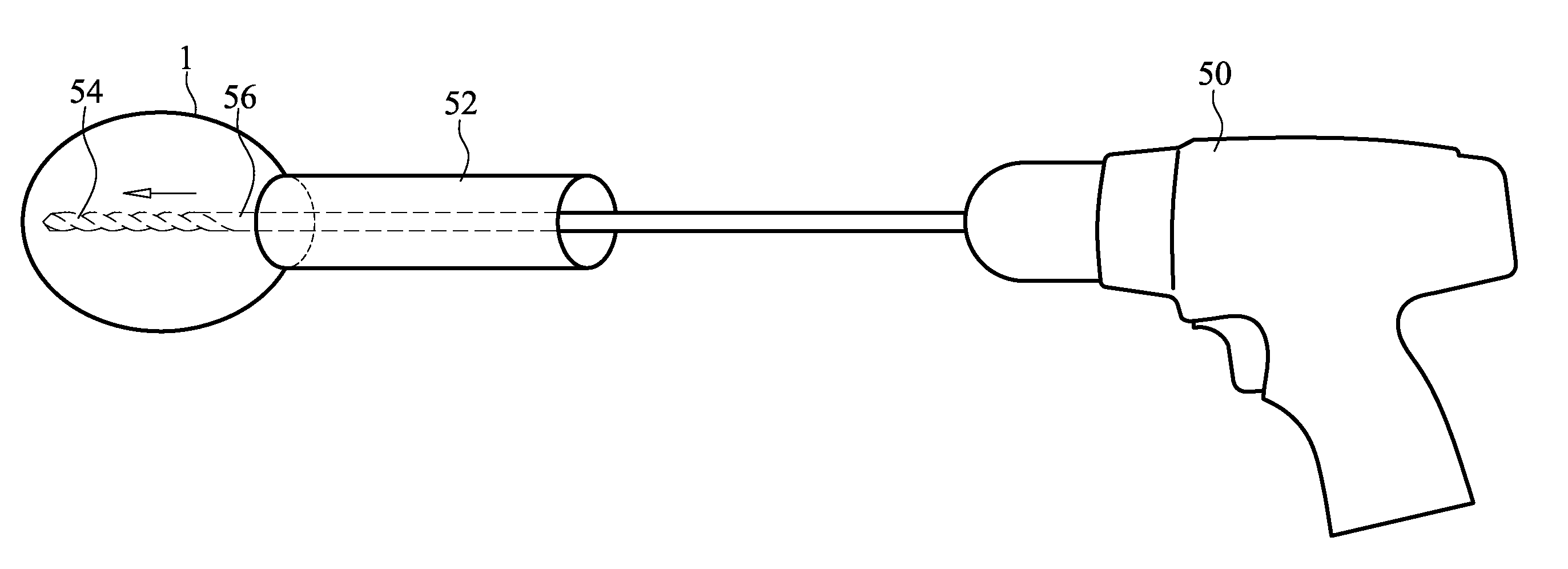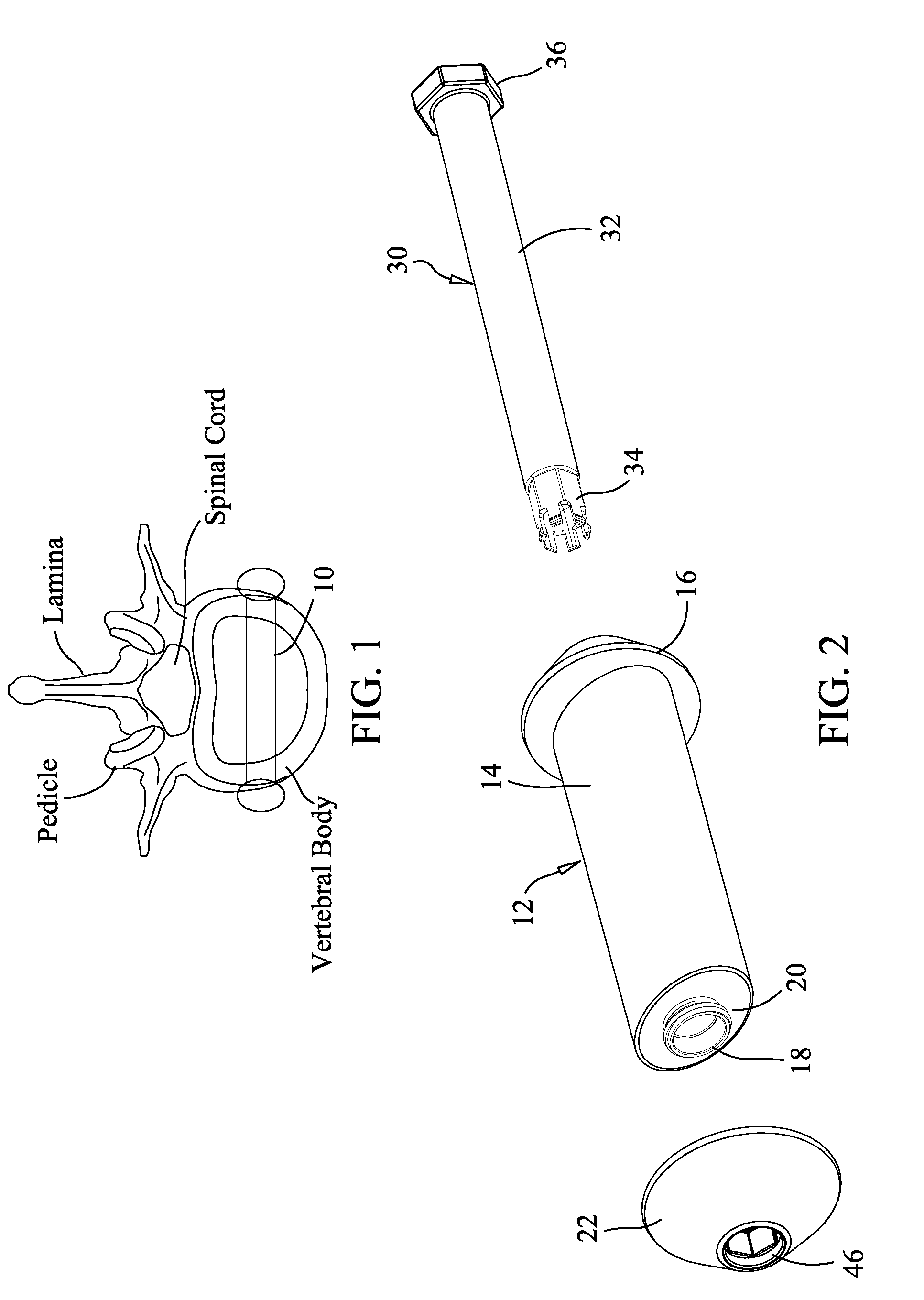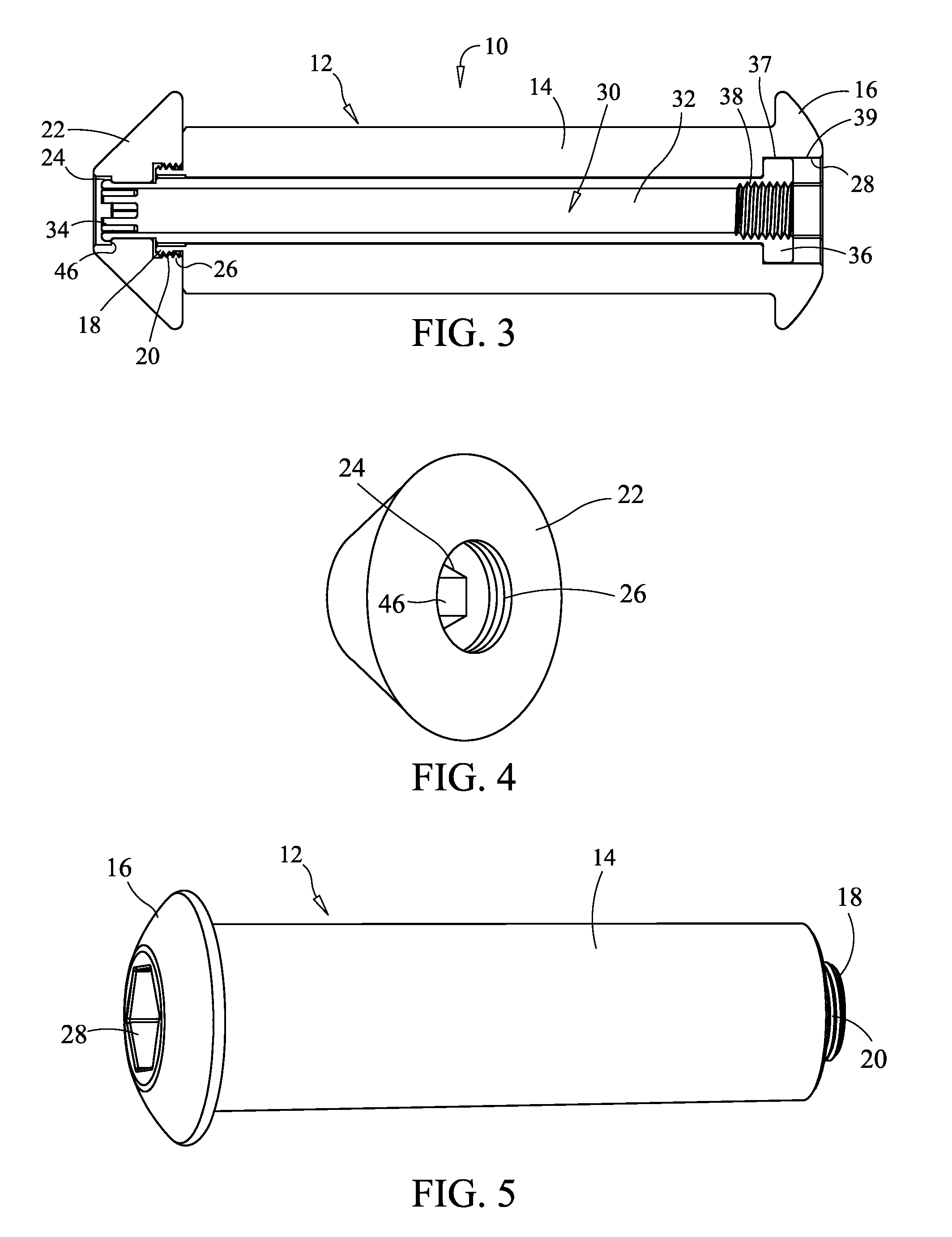Intervertebral disc prosthesis and method for implanting and explanting
a technology for intervertebral discs and prostheses, applied in the field of prostheses for intervertebral discs, can solve the problems of slight tension, abutting vertebrae are still slightly distracted, and the adjacent vertebrae are still slightly abutted, and achieve the effects of quick and easy implantability, rapid and easy explantation, and quick and easy implantation
- Summary
- Abstract
- Description
- Claims
- Application Information
AI Technical Summary
Benefits of technology
Problems solved by technology
Method used
Image
Examples
Embodiment Construction
[0071]Referring now to the figures of the drawing in detail and first, particularly to FIGS. 1 to 7 and 18 to 21, the prosthesis of the present invention will be described structurally first and then the method of implanting laterally in an intervertebral disc 1. As shown in FIG. 3, for example, the prosthesis 10 consists of (i) a main prosthesis body 12 in the form of an elongated cylindrical tube 14 having a cap 16 with a recessed hex opening 28 integrally formed at one end and a reduced section 18 at its other end formed with a thread 20, (ii) a cap 22 formed with a recessed hex opening 24 (smaller in diameter than recess hex opening 28) on its side facing outwardly and a recessed threaded section 26 on its side facing inwardly for attachment to the threaded reduced section 18, and (iii) a hex locking member 30 in the form of an elongated tube or rod 32 having at one end a hex form 34 that fits into and mates with the hex opening 24 of cap 22, and at its other end an enlarged hex...
PUM
| Property | Measurement | Unit |
|---|---|---|
| height | aaaaa | aaaaa |
| width | aaaaa | aaaaa |
| vertical height | aaaaa | aaaaa |
Abstract
Description
Claims
Application Information
 Login to View More
Login to View More - R&D Engineer
- R&D Manager
- IP Professional
- Industry Leading Data Capabilities
- Powerful AI technology
- Patent DNA Extraction
Browse by: Latest US Patents, China's latest patents, Technical Efficacy Thesaurus, Application Domain, Technology Topic, Popular Technical Reports.
© 2024 PatSnap. All rights reserved.Legal|Privacy policy|Modern Slavery Act Transparency Statement|Sitemap|About US| Contact US: help@patsnap.com










